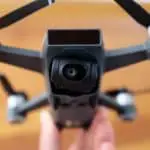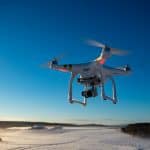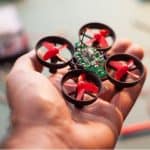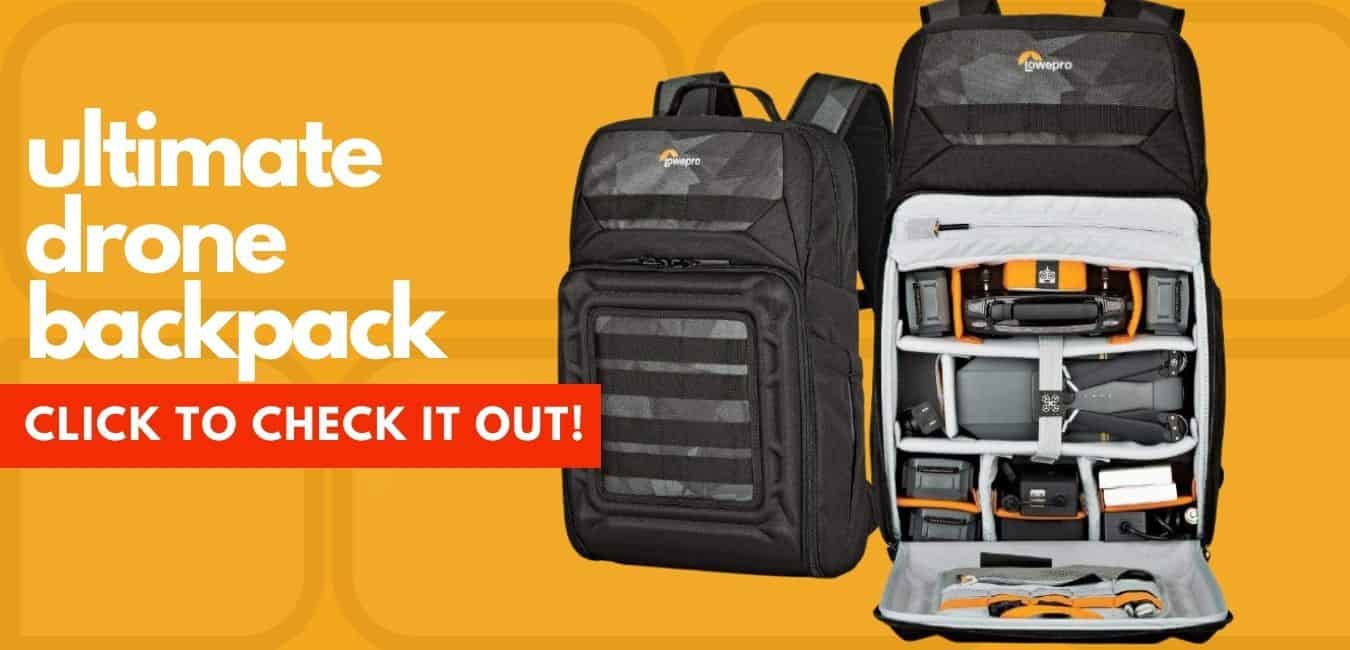Top 10 Long Range Drones – a Guide to the Best available today
If you’re in the market for a new drone, then you’ve probably already shortlisted your favorite models based on their camera quality, their battery life, and their cost. But there’s another important factor that you may not have considered: their range. This article is a comprehensive guide to finding the right long range drone.
There are an ever-increasing number of options on the market for drone enthusiasts today, and one of the things that can really distinguish a good drone from a great drone is how far you can fly it before you begin to lose control. If you want a drone that can capture stunning panoramic views from high in the sky, or that can explore inaccessible rooftops and abandoned towers, then you need a long range drone. But which is best?
Luckily for you, we’ve done the research, and assembled in-depth reviews of ten of the best. It’s no surprise that DJI came out on top with the DJI Mavic 2 Zoom, which combines a top-quality 4K camera, an 8km range and a half hour flight time. There’s more to the story, though, and for a detailed look at all the best options, continue reading below.
Quick Links
A complete guide to long range drones
You may not have considered range to be an important factor in choosing a drone before, so before we get to our round-up, we’ve put together a detailed guide on why range matters, what they can do, what the legality of long range flying is, and how you can use them effectively.
What can I do with a long range drone?
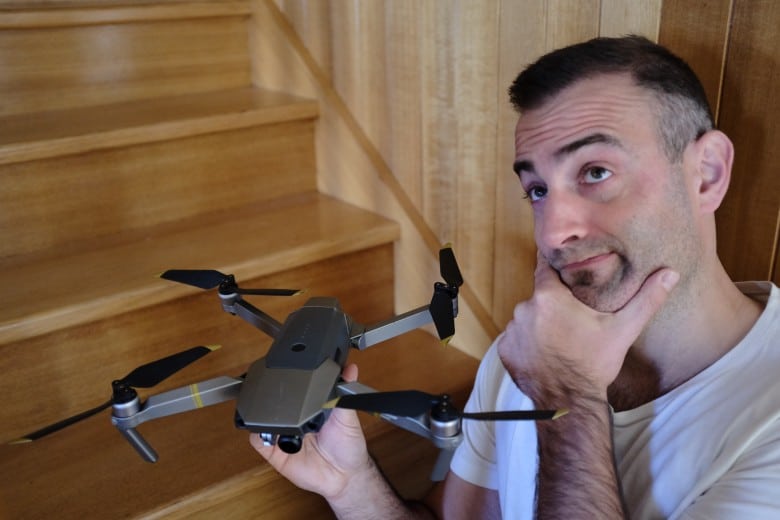
The technology that enables long range flying comes at a price, with long range drones typically costing more than their shorter range counterparts. You might be thinking, then, why shell out the extra money?
First, let’s talk about what we mean when we say ‘long range’. On a fairly basic, middle-of-the-road drone, you can expect a range of around 500 meters. That’s not bad – the Empire State Building is less than 400 meters high. However, the DJI Mavic 2 Zoom, which tops our list, has a range of an astonishing 8 kilometers. That’s almost as long as Mount Everest is tall! To put that into perspective, that means you could stand in Jersey City and fly your Mavic right over Manhattan, and land it in Williamsburg without losing signal.
You need to have your skills up when piloting a drone beyond line of sight, so why not read our article on how to fly a drone and complete all of the drills.
What are long range drones good for?
Apart from the opportunity to reel off statistics like those above to impress your friends, what are the practical uses of having a drone with an 8 kilometer range? Aerial photography and video capture are the most obvious beneficiaries, as the long range allows you to get your drone high into the sky for stunning panoramic views, or across inaccessible terrain for daring explorations. Have you ever been on holiday and seen a little landmass out to sea that you can’t get to? Send your drone! Ever wanted to see Dubai from the penthouse of the Burj Khalfifa? You don’t have to be a Sheikh any more, just send your drone!
Aside from cinematography, they also have many other practical applications. The height they can achieve is useful to a number of businesses and industries, and among other things they can help with aerial mapping and land surveying, surveillance and monitoring, and in various agricultural roles. They can even be used in emergency situations: did you know, for example, that firefighters in Paris used DJI drones to track the fire that engulfed the Notre Dame Cathedral?
What to look for in a long range drone

Choosing isn’t as simple as picking the drone with the highest number and calling it a day. While the Mavic 2 Zoom could, theoretically, fly almost to the top of Mount Everest, the reality is very different.
To begin with, range has to be considered alongside flight time. The golden rule when flying your drone is, of course, to remember to allow time for the return journey. It’s no use taking a drone with a 20 minute battery and flying it in the same direction for 20 minutes, or else when its battery fails you’ll have a long walk to collect it!
That being the case, a drone is only as good as its battery and its range combined, which means factoring in its speed, too. If your drone has a theoretical range of, say, 4 kilometers and a battery life of 20 minutes, you need to make a rough calculation (factoring in take-off and landing) of how much of that 4 kilometers it can cover in 10 minutes in order to get a sense of its actual range.
A long range also means you won’t have the luxury of seeing your drone as you fly it, so a good FPV (First Person View) control system is essential. You could go one better and get a VR headset, which would be really beneficial when flying beyond line of sight. As you take your drone out over longer distances, you need to be sure that the video transmission remains as fluid and latency-free as possible (read about zero latency connections). The best long range drones have advanced systems that support dual 2.4 GHz and 5.8 GHz frequency bands, ensuring minimum interference and maximum distance.
A good camera is an important consideration to ensure quality pictures and video can be captured on your long range missions, and good quality latency free FPV is important. Check out our article on camera drones for further information on the drones discussed later in this article.

Finally, should you lose sight of your drone and lose signal on your video stream, it’s also a good idea to have the most up-to-date navigation system in your drone, too. When flying, obstacle avoidance is essential for avoiding messy collisions, and should you take your drone out too far, a return to home feature will take the stressful task of getting your drone back in time out of your hands as a pre-programmed routine takes over.
How far can I fly my drone?
Even with the technology, there are still other things to take into account when preparing to take your drone out on a long-range flight. Foremost among these are the laws in your particular location. If you’re in the US, when flying your drone your activities fall under the jurisdiction of the Federal Aviation Administration (FAA). The FAA have a pretty strict set of laws in place to curb dangerous and unlawful uses of drone technology, and you must make sure you remain mindful of these at all times when flying.
Perhaps the most important of these rules is that, if you are a recreational drone user, you must fly your drone below 400 feet (120 meters) in height and you must keep your drone within eyesight at all times – see below video for guidance on how to fly line of sight. This means no switching to FPV and trying to fly your drone to the top of the Statue of Liberty!
There are also a number of restrictions detailing where you can fly. Entering commercial airspace is an absolute no go, but you also aren’t allowed to fly over groups of people, stadiums and sporting events, or near active emergency operations. There have also been a number of legal disputes over issues of people flying drones over private (for example residential) property. There’s still no real precedent on this from a legal perspective, but to stay safe its best not to fly anywhere that might disrupt people’s privacy or cause them to take issue with you.
If you’re using your drone for more than just amateur photography and video, the FAA do offer a number of waivers which you can apply for in order to be granted temporary exemption from these laws, however the process is costly and not that quick, so if you’re planning to open your next independent movie with a tracking shot through the streets of Manhattan, you’ll need to ensure you leave plenty of time to give the FAA notice.
Luckily for the amateurs among us, we’ve come a long way from the ‘wing it and hope for the best’ approach that typified early drone usage. There are now plenty of handy tools to help work out whether you are flying your drone legally – we recommend using an app like AirMap to keep track of where you’re safe to fly.
When you aren’t in the US, you’ll be subject to local laws, so it’s always worth checking up on these before taking your drone abroad. Realistically if you’re out to sea or hiking in the wilderness, it’s probably fine to switch to FPV and take your drone exploring, but its always best to keep aware of relevant restrictions and advice.
Which drone has the longest range?
If you truly want long range, you’ll have to be prepared for a hefty price tag. A $16.9 million price tag, to be exact. That’s how much the General Atomics MQ-9 Reaper, the United States Air Force’s current drone of choice, costs per unit. With a range of 1,850 kilometers (just a bit less than the distance from New York to Havana) and a 40 hour flight time, the Reaper is truly one of the world’s most sophisticated drones.
However, unless you’re one of the few USAF trained drone pilots, flying a Reaper is probably a bit out of reach. A more realistic range to aim for is 8 kilometres, which, as we’ve mentioned already, is the maximum range of the DJI Mavic Zoom 2, the longest range drone currently on the market.
There are other drones available that can fly further. The UAV Systems X8 Surveillance Drone, for example, has a massive 40 kilometer range, but this is a specialized piece of kit that costs close to five figures, and as such isn’t a practical choice for recreational users.
The reviews
Now that you know what you can (and can’t) do, as well as what technology to look out for, it’s time to get down to business of picking which drone is right for you. We’ve assembled ten of the best options on the market below, and have taken a detailed look at the specifications, pros and cons, and ideal use cases for each drone, to give you a one-stop comprehensive guide to everything you need to know about buying in 2019.
DJI Phantom 4 Pro
Key specs: 7 kilometer/4.3 mile range, 30 minute flight time, 20mp camera, 4k video
Who it’s for: prosumers, serious hobbyists, photographers and filmmakers
Who it’s not for: light travellers
We begin the line-up with the DJI Phantom 4 Pro. If you’ve scanned down the list already, you’ll notice that DJI make up over two thirds of it on their own. There’s good reason for this dominance. DJI were one of the first companies to bring drone technology to the consumer market, and since the release of the original Phantom in 2013, they have continued to hold their position as the world-leader in drone production. Their drones have been used for everything from firefighting to filming, with shows like Better Call Saul and Game of Thrones making use of DJI’s technology.
For regular consumers, DJI have made drone technology accessible to a mass audience. Can you even call yourself a Youtuber these days if you don’t have at least one DJI-powered aerial shot in your videos? With a 70% share of the drone market, it’s certainly the case that DJI are the brand to choose if you want the very best products out there, and the Phantom 4 Pro is a perfect example of this rule.
Arriving in 2018, the Phantom 4 Pro is DJI’s original drone updated with the latest cutting-edge technology. It features a fantastic 20 megapixel camera capable of shooting 4K video footage slung on a gimbal under its iconic frame. It has one of the longest flight times of any commercially available drone, at 30 minutes, and a range of 7 kilometres. It also features the latest in DJI’s flying technologies, including exceptional collision avoidance and GPS-assisted autonomous flight modes. While expensive, the Phantom 4 Pro really does offer just about everything you need in a drone in one package!
Speaking of the package, that’s perhaps the Phantom 4 Pro’s one negative: it’s a heavy, bulky machine that doesn’t fold down or pack away easily, meaning it’s not suitable for those looking for a compact, travel-ready option.
DJI Inspire 2
Key specs: 7 kilometer/4.3 mile range, 28 minute flight time, 24mp camera, 6K video
Who it’s for: professional filmmakers
Who it’s not for: hobbyists
While DJI’s Phantom Pro might have ‘professional’ in the name, it’s the Inspire that truly appeals to those looking for a professional-grade filmmaking drone. This intimidating machine is a far cry from the flying toys at the lower end of the drone market. DJI have packed the Inspire with their most advanced technology, including a cutting-edge video transmission system enabling 1080p FPV flight, intelligent autonomous flying and the most sophisticated return to home function featured in any consumer drone. The Inspire even features a self-heating system enabling it to fly in low temperatures.
As you would expect for a drone designed specifically for filmmakers, it’s with the camera that the Inspire 2 really shines. DJI package the Inspire with a Zenmuse X4S camera, but this can easily be detached and upgraded, with DJI upgrading to a more advanced X5S with their ‘professional’ package. These options allow the Inspire 2 to be configured to shoot incredible 6K footage and 24mp burst stills.
Like the Phantom, the Inspire has a maximum range of 7 kilometers. It has a top speed of 58mph, and also features an innovative dual control system, allowing for a pilot to fly the drone while a camera operator does the lens work.
Yuneec Typhoon H
Key specs: 1.6 kilometer/1 mile range, 25 minute flight time, 12mp camera, 4K video
Who it’s for: prosumers, serious hobbyists
Who it’s not for: professional filmmakers
The first non-DJI drone on the list, the Yuneec Typhoon H is in many ways the exact opposite of the Inspire 2. Where the Inspire does one thing very well (filmmaking) but at a high cost, the Yuneec is a more reasonably priced all-rounder that will almost certainly meet all the needs of any hobbyist, but might not be advanced enough to appeal to those looking for professional-grade performance.
In many ways Yuneec are the Android to DJI’s Apple, and probably represent the dominant DJI’s only serious competition today. Comparing the Yuneec to the Phantom 4 Pro (they’re around the same price range), the Yuneec does come off slightly worse in terms of its stats. It has a range of around 1.6 kilometers and a battery time of about 25 minutes, both of which are not as good as DJI’s offering.
In terms of camera quality, the Yuneec also falls short, although its 12mp camera and ability to shoot 4K footage are hardly worthy of outright dismissal. In terms of functionality, it has good obstacle avoidance software, FPV capabilities, and a number of GPS-enhanced autonomous flight modes. Where the Yuneec actually improves on the DJI is in its portability. It has a light carbon fiber frame and fold-down arms that make it a better choice for travel than the chunkier Phantom.
Finally, from a personal perspective, we’d argue that the Typhoon is also the better looking of the two drones. Its matte black, carbon fiber chassis and six-armed design simply looks more sophisticated than the white plastic of the DJI. Let’s face it, everything looks cooler in black!
DJI Mavic Pro
Key specs: 7 kilometer/4.3 mile range, 27 minute flight time, 12mp camera, 4K video
Who it’s for: hobbyists, travel filmmakers
Who it’s not for: anyone concerned with having the most up-to-date technology
Back to DJI now, and to the first of their ultra-portable, foldable Mavic line to make this list. Now replaced by the new Mavic 2 Zoom and Pro models (more on those in a minute), the original Mavic Pro has had its RRP cut and now represents excellent value for money, coming in cheaper than anything we’ve looked at on this list so far.
Not only is the Mavic Pro relatively cheap (certainly in comparison to most other drones on this list), it is also a truly fantastic piece of equipment that once again demonstrates just why DJI is so dominant. Its lightweight, foldable design makes the Mavic Pro perfect for on-the-go drone cinematography and travel filmmaking. It has a great 7 kilometer range, a 40mph top speed, and a 27 minute battery life, putting it not far behind the far more clunky Phantom.
It also features quick charge batteries that can be recharged in just an hour, meaning that you can be up and in the air again in no time. In fact, pack three batteries and a charger, and by the time you’ve run all three down the first one will be charged again, meaning you could theoretically keep flying this thing all day!
As part of its portability, the Mavic features a compact controller, which is serviceable but which some may find a little too small. Sticking with issues caused by the Mavic’s portability, its small size and weight also means that in windy conditions, the Mavic may struggle a little to remain stable.
Ultimately though, we feel these are small prices to pay for the convenience of being able to carry around a flying 4K camera that takes up barely any more room than a couple of books.
DJI Mavic 2 Zoom
Key specs: 8 kilometer/5 mile range, 30 minute flight time, 12mp camera with optical zoom, 4K video.
Who it’s for: hobbyists, prosumers, filmmakers, travellers – in short, pretty much everyone!
Who it’s not for: professionals, filmmakers working in demanding conditions
If you thought the Mavic Pro was good, the Mavic 2 Zoom offers everything the original Pro does, and much more. As one of the most recent releases from DJI, the Mavic 2 Zoom contains some of the most advanced technology DJI have ever brought to market.
The Zoom takes its name from its camera (which we’ll get to in a moment), but it could just as easily be named for its top speed, which is a zippy 44mph. Alongside this, the Zoom has the longest range of any drone currently available, at 8 kilometers, making it a truly impressive long range machine.
The camera represents another first for DJI. The Zoom’s impressive setup can capture 4K video and 12mp stills, but where it really excels is at – you guessed it – zooming. The Zoom’s sensor has a 2x 24-48mm optical zoom, making it the only consumer drone that can shoot 4K with an optical zoom. This makes it perfect for capturing detail, and alongside its range and top speed, puts the Zoom at the top of the list for capturing fast-paced, action-packed scenes.
Pack all of these innovations into the already impressive lightweight body of the Mavic Pro, and you have what we consider to be the single best long range drone on the market.
DJI Spark (with controller)
Key specs: 2 kilometer/1.2 mile range, 15 minute flight time, 12mp camera, 1080p video
Who it’s for: travellers, hobbyists, those on a budget
Who it’s not for: professionals and prosumers
From the cutting edge to something a little more light-hearted and fun, the DJI Spark is the company’s most accessible and beginner-friendly drone. At half the price of the already outdated Mavic Pro, the Spark’s biggest draw is its price tag. But just like the iPhone XR, Apple’s entry-level version of their more premium XS and XS Max, the DJI Spark is still packed with the premium technology DJI are famous for.
Just the fact that the Spark makes this list should tell you that DJI haven’t skimped on the quality of this plucky little machine. Its stated 2km range, achievable when you pair it with the dedicated controller, is extremely impressive for a drone of this size. A 15 minute battery life pulls the Spark down, but with DJI’s impressive autonomous flying technology and sophisticated return to home programming featured in the Spark, you needn’t worry about running out of juice and losing your drone.
The camera is also surprisingly good for a drone of this size and price. It’s capable of producing 12mp stills that rival the old Mavic’s, although with only a 1080p sensor, moving footage does take a bit of a quality hit. Despite all that, there’s something especially loveable about this neat little drone. If you already have a bulky Phantom and don’t want to spend the same again on a Mavic, we think the Spark would be perfect as a travel-sized alternative.
The best of the rest
Don’t want to shell out upwards of $1k, but still want a good long range drone? Check out the below options for some of the ‘best of the rest’. Cheaper, outdated, or less feature-rich than the drones discussed above, these models still offer excellent quality and plenty of advanced technology without the price-tag that comes with the cutting-edge.
DJI Phantom 3 Pro
Key specs: 5 kilometer/3 mile range, 23 minute flight time, 12mp camera, 4K video
Who it’s for: hobbyists, filmmakers
Who it’s not for: professionals, anyone concerned with having the most up-to-date technology
Much like the Mavic Pro, the Phantom 3 Pro is DJI’s previous best iteration in the Phantom line, though it has now of course been replaced by the Phantom 4. As you would expect from DJI, the Phantom 3 Pro has exceptional build quality and top notch technology that still blows plenty of rival manufacturers’ newest drones away. If you aren’t bothered about having the latest and greatest models DJI offer, it is still an excellent choice. We have a entire article on whether the Phantom 3 is a still a good bet.
The Phantom 3 Pro has a 5 kilometer range and a 23 minute flight time, and sports a 4K-ready camera on a gimbal. It features many of DJI’s innovative technologies, like waypoints and return to home, and with plenty of spare parts and second-hand options on the market, it can be picked up for an absolute steal.
DJI Phantom 3 Standard
Key specs: 500 meter/1500 feet range, 23 minute flight time, 12mp camera, 1080p video
Who it’s for: hobbyists, bargain hunters
Who it’s not for: prosumers, long range fliers
The Phantom 3 Pro’s cheaper and less feature-packed brother, the Phantom 3 standard is one of the most affordable ways of getting your hands on a DJI product. Like the Pro 3, the standard Phantom features a 12mp camera, although video footage can only be captured at 1080p.
The Phantom 3 Standard’s flight time is comparable to the Pro 3 at about 23 minutes, but the range is significantly shorter, with its max transmission only hitting about 500 meters, or 1500 feet. If long range isn’t your priority, or you feel like 500 meters is enough (and to be frank, if you’re in the UK or US and law restricts you to flying your drone within eyesight, it may well be), then for a low price you can get one of DJI’s previous top-of-the line models.
Parrot Bebop 2 (with Skycontroller)
Key specs: 2 kilometer / 1.25 mile range, 25 minute flight time, 14mp camera, 1080p video
Who it’s for: hobbyists, bargain hunters
Who it’s not for: prosumers, filmmakers
Long ago, when the first generation of drones were hitting the market, it looked like Parrot would ascend to the top of the market alongside DJI. Since then, though, this European manufacturer has fallen somewhat behind. That’s not to say that they don’t still sell some great machines however, and the Bebop 2 is among their best. If you want to know more about Parrot and other drone manufacturers, check out this post.
A lightweight and compact Drone comparable to the DJI Spark, the Bebop 2 packs a lot of great technology into its 500 gram frame, making it a perfect travel companion. A 14mp camera mounted on the nose of the drone can also capture 1080p film, and when paired with Parrot’s dedicated Skycontroller, the Bebop 2 can travel up to 2 kilometers over a 25 minute flight time.
For less than the current cost of the Phantom 3 Standard, you can get your hands on a machine with mostly better specifications, although filmmakers may still want to choose the Phantom over the Parrot for the former’s gimbal mount.
Altair Aerial Blackhawk
Key specs: 300 meter/1000 feet range, 15 minute flight time, no camera (GoPro compatible mount)
Who it’s for: hobbyists, bargain hunters
Who it isn’t for: prosumers, long range fliers
Finally, we have the Altair Aerial Blackhawk. While not really a long range drone to the extent as most of the rest of this list, the Blackhawk deserves a spot here as an excellent budget alternative to the other listed models.
For your money, you get a solidly designed, quiet, stable drone that doesn’t look out of place sat next to a Phantom or a Typhoon. The Blackhawk can’t achieve the same results as these premium machines, but for a tenth of the price would you really expect it to? It does however manage a competent 15 minute flight time, and its 300 meter range is better than virtually everything else in its price band. Best of all, the Blackhawk is GoPro compatible, meaning you could feasibly shoot 4K video using the drone as a flying platform.
In our opinion, the Blackhawk is an excellent choice for those on a budget who still want a taste of what a premium drone can achieve.
Conclusion

So which is the best? As we mentioned at the beginning of this article, we feel that the DJI Mavic 2 Zoom takes the crown. Combining cutting-edge flying and camera technology with the longest range seen on a consumer drone to-date, the Mavic 2 Zoom might not just be the best long range drone, in our opinion may be the best drone on the market today, full stop.
Of course, different consumers have different needs. If you’re a semi-professional filmmaker, you may be attracted to the advanced technology packed into the Inspire, meanwhile if you’re looking for a budget-friendly option, the Blackhawk, or one of the older DJI models, might be the right choice.












